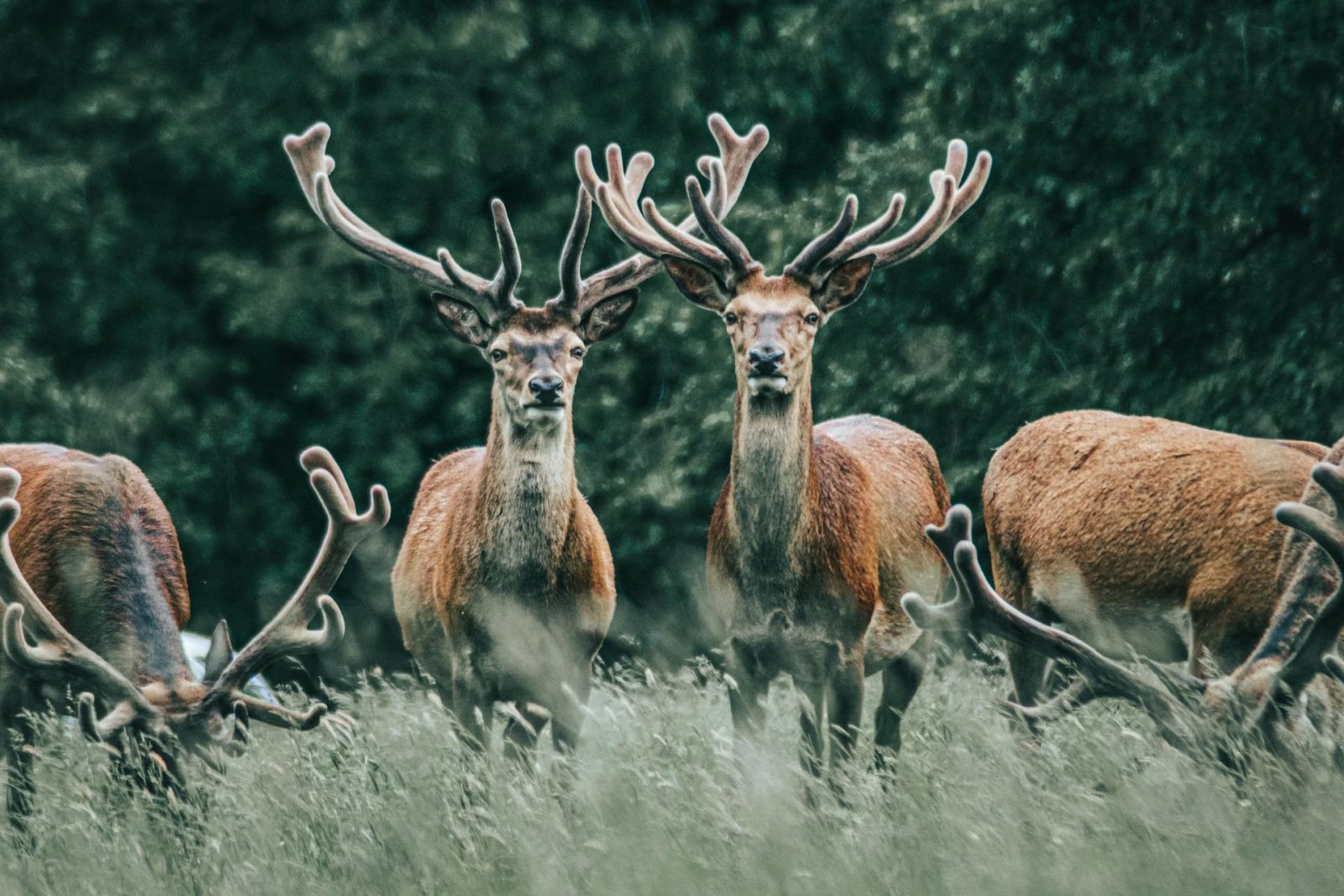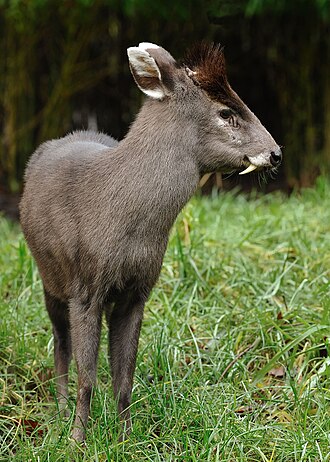
Cervidae (the deer family)
Cervidae is the family of deer. It is a close relation of Bovidae, which includes antelopes and giraffe.
There are 2 branches of this family Cervinae (Old World deer) and Capreolinae (New World deer). They will be linked from the images.
The first tribe in Cervini is Munticini
Munticini includes just 2 genus
Genus Elaphodus contains just one species, that of the Tufted deer
Genus Muntiacus contains 12 species, all of the worlds Muntjac species (the moschidae family)
The other (2nd) tribe is Cervini (true deers) and includes 7 genus some of these only have a few species so will be dealt with together.
In the first group we will include:
Genus Ruserus (1 species), Genus Panolia (1 species), Genus Elaphurus (1 species), Geuns Dama (2 species) in that order.
and now just one genus on each set
Genus Axis
Genus Cervus
Gens Rusa
Capreolinae which is the new world sub-family of deer. This includes 3 tribes of deer
Tribe Capreolini which includes 2 genus
Genus Capreolus (2 species) and Genus Hydropotes (1 species) (pictures in this order)
Also Tribe Alcenini which includes one Genus Alces with just one speices – the elk
I should note, that while the deer below this point may well get their own page in time, for now, they will have a little information added to their title popup.
The last tribe is Tribe Odocoileini which includes 7 genus
I will deal with these 7 genus in two blocks
In the first block:
Genus: Blastocerus 1 (species), Hippocamelus 2, Odocoileus 3, Ozotoceros 1, Pudu 2 and Rangifer 1
Last genus is genus Mazama, the Brocket family. Brocket, any of several small deer constituting the genus Mazama of the family Cervidae, and found from Mexico to South America. Timid browsers, brockets inhabit wooded areas and generally live alone or in pairs.
If you want to return to the Ruminants family page click here
Musk deer are similar to cervids in many respects and as such are often classified as a subfamily of the Cervidae. However, they are not. They differ in several ways, but particularly, in that both sexes lack antlers (the male has a huge, scimitar-like canine instead; females have smaller canines). They have a single opening to their lacrimal canals, versus 2 in cervids.
To read about the 7 species of Musk deer, click here
